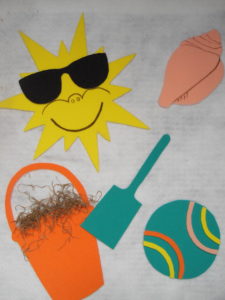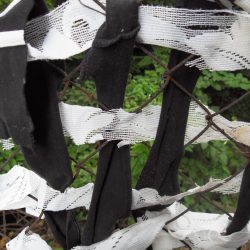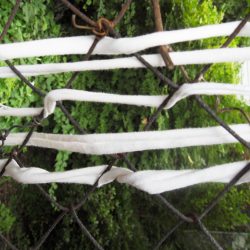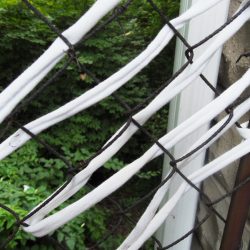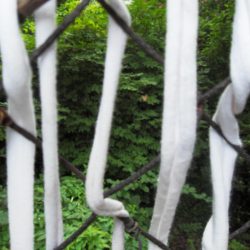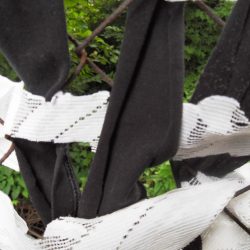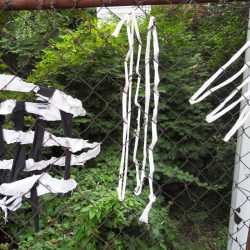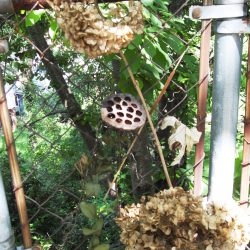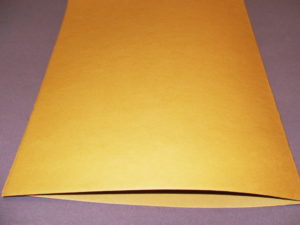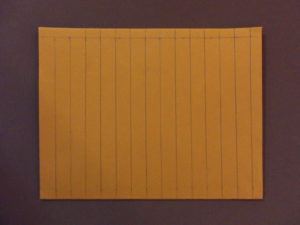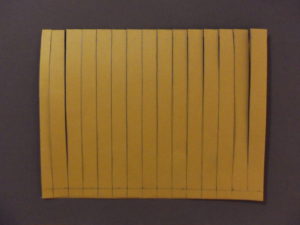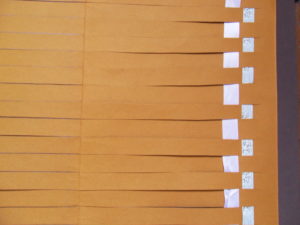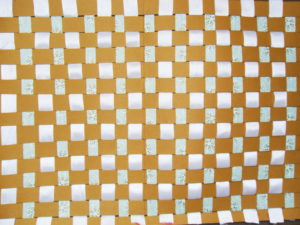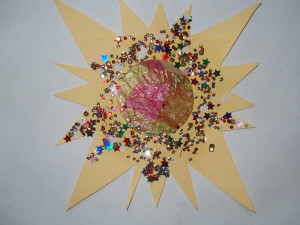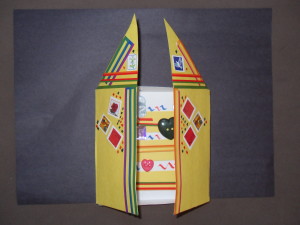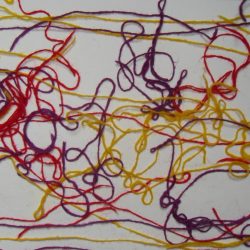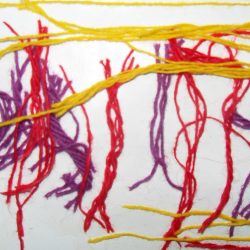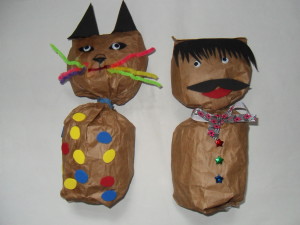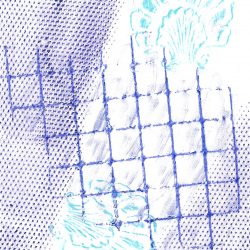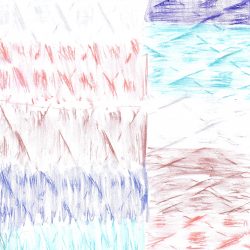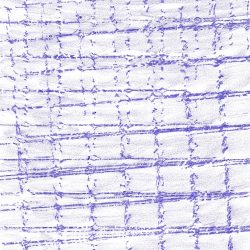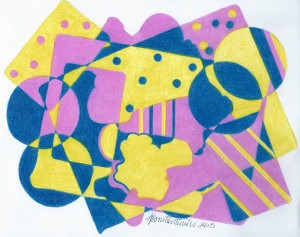WHAT IS A BANNER?
A banner is a piece of cloth suspended between two poles and often bearing a design, symbol or slogan. Banners can celebrate the seasons, holidays or bear slogans. The designs in this series of Art Tutorials celebrate summer, spring, winter and fall.
SUMMER IS FUN!
Ages: 5 – 12 years
Time: ½ hour – 1 hour
MATERIALS:
White felt square 36”x 36
Orange Fun Foam*
Yellow Fun Foam
White Fun Foam
Beige Fun Foam
Turquoise Fun Foam
Black Fun Foam
Moss
Black marker
1. Measure and cut the white felt to 14” x 20”. Holding the felt vertically, fold a 1” seam at the top and iron. Fold a second 1” seam and iron again. Glue. The dowel rod will go through this loop.
2. Enlarge the photo of the completed banner (above). Then trace and cut the sun from the yellow Fun Foam, the pail from the orange Fun Foam, the shell from the beige fun Foam, the shovel from the turquoise Fun Foam, and all four colors of Fun Foam for the ball. Finally, cut the sunglasses from the black Fun Foam. Glue the pieces down.
3. Take a small amount of moss and glue it on the top of the pail. Press down firmly while it dries.
4. Use a black marker to draw the sun’s cheeks, smile and nose. Sketch a few lines on the shell to make it look three-dimensional. Also, spell out “Summer Is Fun”!
5. Cut the dowel rod to about 16” x 18”. Insert through the loop at the top of the felt. Cut string to a length that is suitable for hanging. Tie the string to the ends of the dowel rod and hang.
Have a fun summer!
Fun Foam is also called craft foam.

